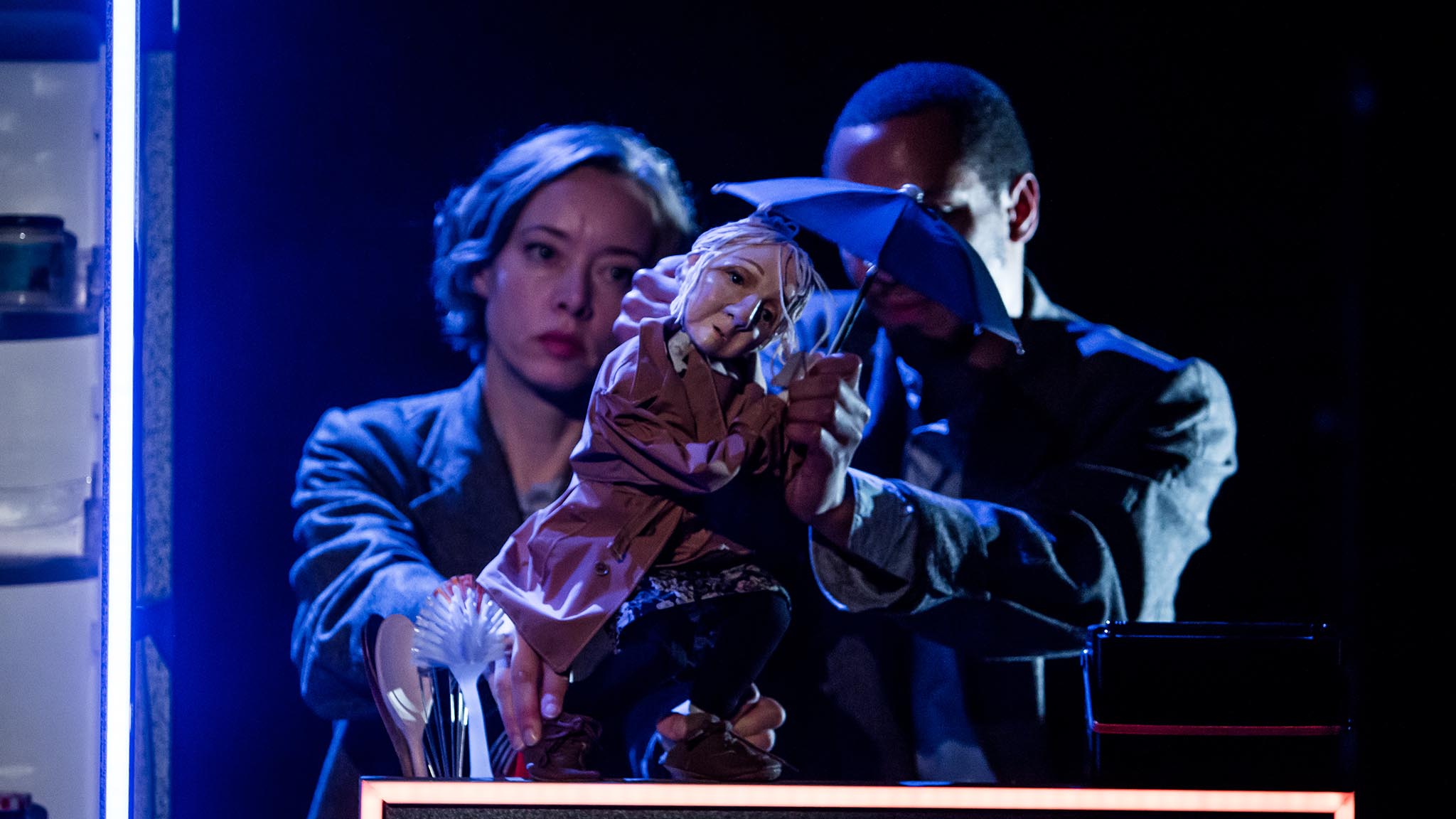The creators of Dartington’s 2017 sell-out Christmas show (The Girl with the Iron Claws) return to Dartington at the beginning of the February half term with Kite – a beautiful play using indoor kites to tell a poignant love-song to the wind, freedom and the joy of play.
Kite starts its run in Dartington following its creation on site by The Wrong Crowd, in association with Soho Theatre. After each performance, audiences will be invited to meet the cast, kite and puppets to find out how the actors animate the puppets and props.
We went behind the scenes to meet two of the show’s creators – Rachael Canning and Hannah Mulder – to find out more about their sparkling new creation.


Rachael Canning: I designed the puppets for a dance version of Kes at Sheffield Crucible, in which we used kites in place of the birds. I thought it was a beautiful image and would be a great basis for a show with The Wrong Crowd. So we started thinking about a story inspired by indoor kite-flying.
Hannah Mulder: We did some research and development and realised pretty quickly that the kite couldn’t be a main character in itself. But we thought it would work really well in relationship with a human character, and it seemed to make sense that that character should be a child.
Rachael: The child has recently lost her mother and has to live with her grandmother. So they’re forced into a situation where they are living together during a really difficult time. We wanted to explore the difficulty of grief and how it can impact people in different ways.
Hannah: They’re both struggling to communicate with each other. So we evolved an idea that there would be no words in the show, partly as a creative challenge to ourselves but also because it reflects how they’re feeling. They literally don’t know what to say.
Hannah: We aren’t very good at talking about grief and loss. We’ve all had our personal experiences, but they can be quite hidden stories. It isn’t a subject that is explored much in theatre for young people, but so many people experience it. When we staged Kite the first time we had lots of people say to us ‘thank you for telling this story’.
Rachael: There’s something quite solemn and transcendent, as well as joyous, about watching kites flying. There’s a fragility to them. Grief somehow felt like a natural theme to accompany that.
Rachael: We were really pleased by the response to the first run, but we knew that there was still more work to do on the show. So this time round it feels like a new version, and we’re really excited to see how the audience respond.
Hannah: We felt the show needed more lightness, and that the story needed to be clearer. So we’ve made a few changes with those things in mind.
Rachael: We work differently on every show. Hannah’s skills are more in writing and directing, and mine are in design and puppetry. We like to create a very collaborative rehearsal room.
Hannah: We all chip in to every element. We co-direct and co-create. Although we’re different characters with different skills, we do have very similar tastes, which definitely helps! We met working on a children’s opera and just immediately hit it off and decided to set up a company.
Hannah: We liked the idea of a name that was a bit rebellious but also inclusive. Together with Bonnie Mitchell, our co-founder, we liked the idea that people would be part of a gang when they engage with any of our work. We definitely strive to create that feeling.
Rachael: On Kite we have a brilliant team of collaborators, from movement director Eddie Kay to composers Isobel Waller-Bridge and Lucy Rivers, and of course our fantastic cast and crew. They all bring something special into the room.
Rachael: Absolutely, especially because we’re visiting lots of places we’ve never been before. There’s the possibility of an international tour, which would be really exciting. The fact the show is non-verbal definitely opens us up to a broader range of audiences.
Hannah: We love working in the South West but we also love to perform to audiences all over the country. We’ve always done that with our shows. It can be a challenge fitting everything in the back of a van but it also forces us to use our creative imaginations.
Hannah: I grew up in London and went to theatre obsessively. I ate it. So it’s really hard to identify particular influences but I’d say Shared Experience were a big one, and Kneehigh with their very physical approach.
Rachael: For this show in particular The Red Balloon and The Snowman were huge influences, in the way they tell stories in a very visual and musical way. Music is a huge part of the show; it acts as a kind of narrator.
Rachael: It really is a show for everyone. The themes are universal, and we tell the story using a range of techniques. We love to see cross-generational audiences enjoying it; young girls discussing it with their grandmas afterwards.
Hannah: We often tell fairytales in our work, and this very much has the feeling of that. There’s a similar sense of wonder. Fundamentally we really hope it will make people feel enlivened and want to go away and play.
How did you come across indoor kite flying? Can you tell us more about this activity and its popularity?
Rachael: In my research for Kite I discovered this whole world of competitive indoor kite-flying which has come about through very light weight materials being more easily available. It’s very popular in countries like America, Taiwan and Japan.
Hannah: Festivals and competitions take place. You can find great examples on YouTube of people flying indoor kites in sports halls accompanied by power ballads. It’s quite a phenomenon.
